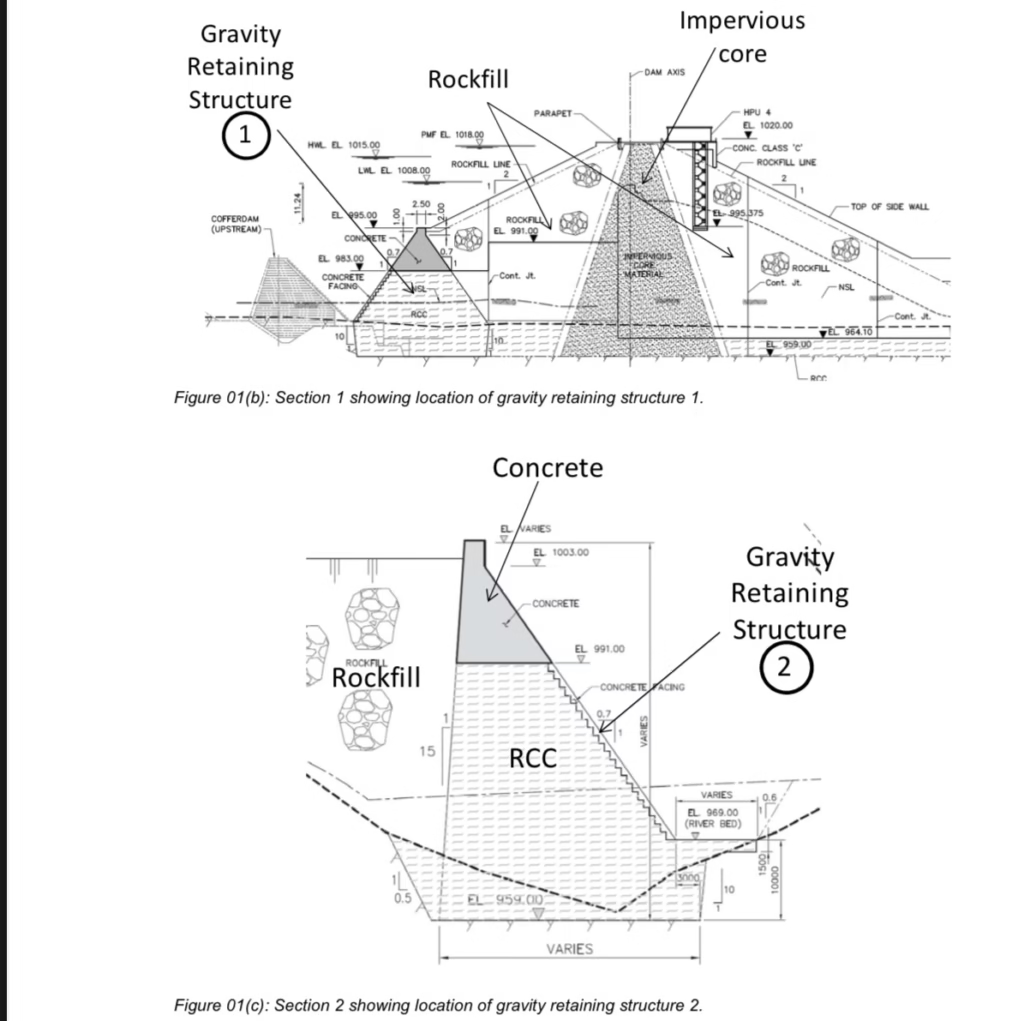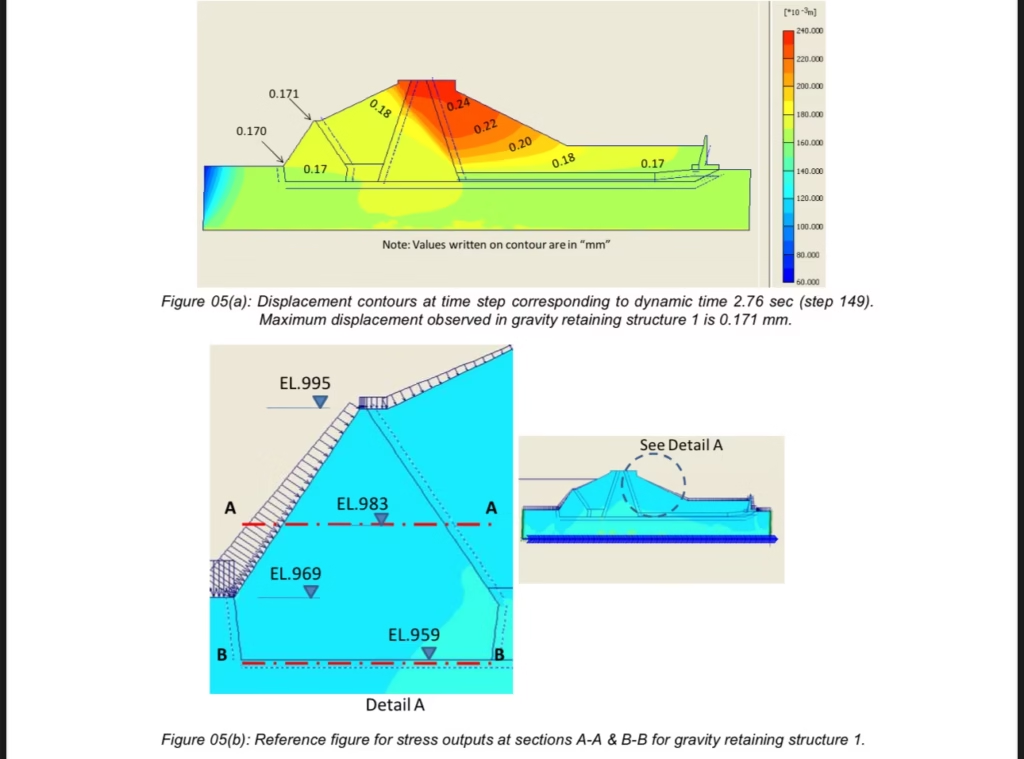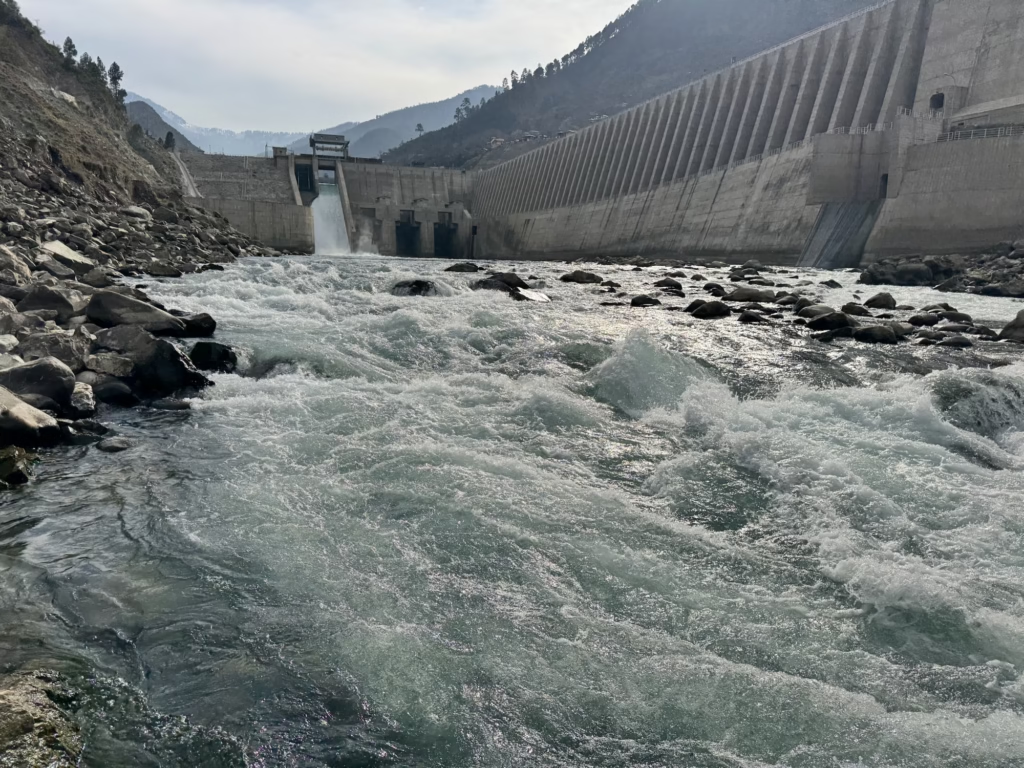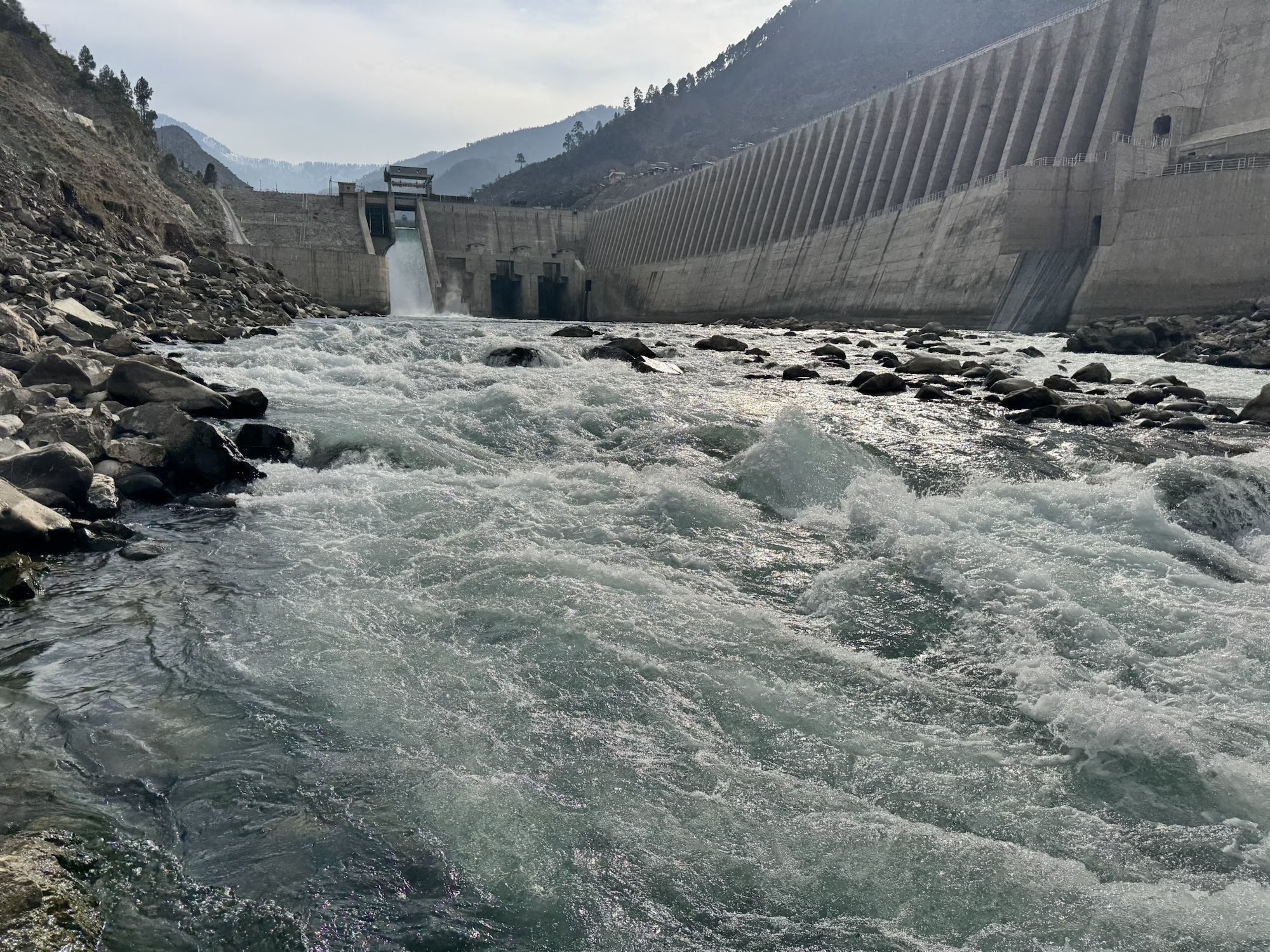1. Introduction
This report focuses on the stability analysis of gravity retaining structures for rockfill dams. These structures are critical for ensuring the safety and functionality of dams, which serve purposes such as water storage, flood control, and hydroelectric power generation. The study aims to analyze the stability of rockfill dams by evaluating various influencing factors, methodologies, and safety measures.

Rockfill dams, typically consisting of compacted rock layers with a central impermeable core, rely on the stability of their gravity retaining structures to withstand hydrostatic and dynamic forces. Ensuring stability involves analyzing the effects of external loads, internal forces, and environmental conditions.

2. Scope of Analysis
The study focuses on:
- Structural behavior under static and dynamic loading conditions.
- Analysis of stability against sliding, overturning, and bearing capacity failure.
- Examination of seepage behavior and associated risks.
- Influence of material properties, geometry, and foundation conditions.
The goal is to determine the reliability and safety of the dam’s retaining structures while identifying potential risks and mitigation strategies.
3. Methodology
The stability analysis of rockfill dams is conducted using theoretical calculations, numerical simulations, and case studies. Key methods employed include:
- Limit Equilibrium Analysis (LEA):
- Used to evaluate the factor of safety against sliding and overturning.
- Focuses on force equilibrium and moment equilibrium conditions.
- Finite Element Analysis (FEA):
- Simulates stress-strain behavior under varying conditions.
- Provides detailed insights into deformation and stress distribution.
- Seepage Analysis:
- Examines water flow through the dam body and foundation.
- Identifies risks of piping and internal erosion.
- Dynamic Analysis:
- Assesses the dam’s performance under seismic loading.
- Includes evaluation of liquefaction potential and deformation patterns.
Data inputs for the analysis include dam geometry, material properties (e.g., density, cohesion, angle of internal friction), and external factors such as water pressure, seismic activity, and foundation conditions.

4. Key Findings
- Static Stability:
- The retaining structures exhibit satisfactory stability against sliding and overturning under static conditions.
- Proper compaction and material selection significantly enhance stability.
- Seepage Behavior:
- Effective drainage systems, such as toe drains and filters, are essential to control seepage and prevent piping.
- Impermeable cores or liners reduce seepage risks.
- Dynamic Stability:
- Earthquake-induced forces increase the risk of deformation and sliding.
- Dams with higher seismic coefficients require reinforcement measures to maintain stability.
- Material Properties:
- Rockfill materials with higher shear strength and well-graded compositions provide better resistance to sliding and settlement.
- The presence of weak foundations necessitates additional measures, such as grouting or reinforcement.
5. Conclusions and Recommendations
The stability analysis of gravity retaining structures for rockfill dams highlights the importance of proper design, construction, and maintenance practices. The following recommendations are made:
- Design Improvements:
- Optimize dam geometry to achieve better force distribution.
- Use high-quality, well-graded materials with adequate shear strength.
- Seepage Control:
- Incorporate effective drainage systems to manage seepage.
- Regularly monitor seepage rates and water levels.
- Seismic Considerations:
- Design dams to withstand seismic loads specific to their geographic location.
- Use dynamic analysis to identify critical zones requiring reinforcement.
- Foundation Treatment:
- Strengthen weak foundations through grouting, compaction, or piling.
- Conduct geotechnical investigations to assess foundation conditions prior to construction.
- Monitoring and Maintenance:
- Implement advanced monitoring systems, such as piezometers and inclinometers, to track dam performance.
- Schedule routine inspections to identify and address potential issues.
6. Future Work
Further studies should explore the integration of advanced technologies, such as 3D modeling and artificial intelligence, for enhanced stability analysis. Additionally, case studies of dams subjected to extreme conditions, such as floods and earthquakes, can provide valuable insights for future designs.
This report serves as a comprehensive guide to understanding the stability analysis of rockfill dam gravity retaining structures. By following the outlined methodologies and recommendations, the safety and longevity of such dams can be ensured, thereby supporting their vital role in water management and energy generation.

